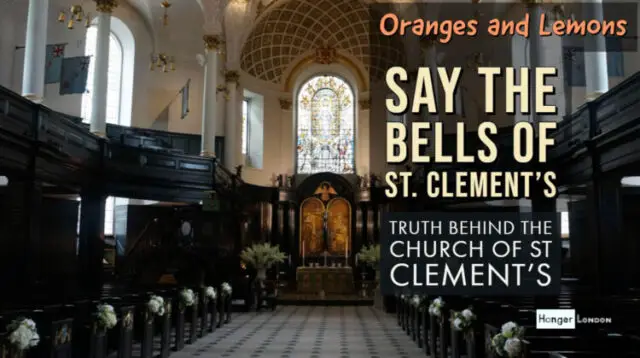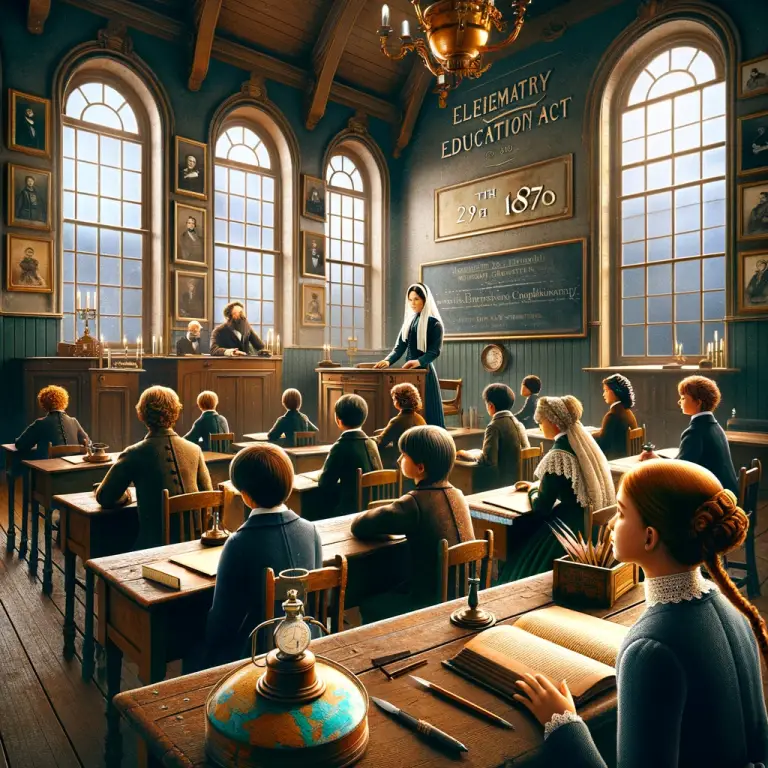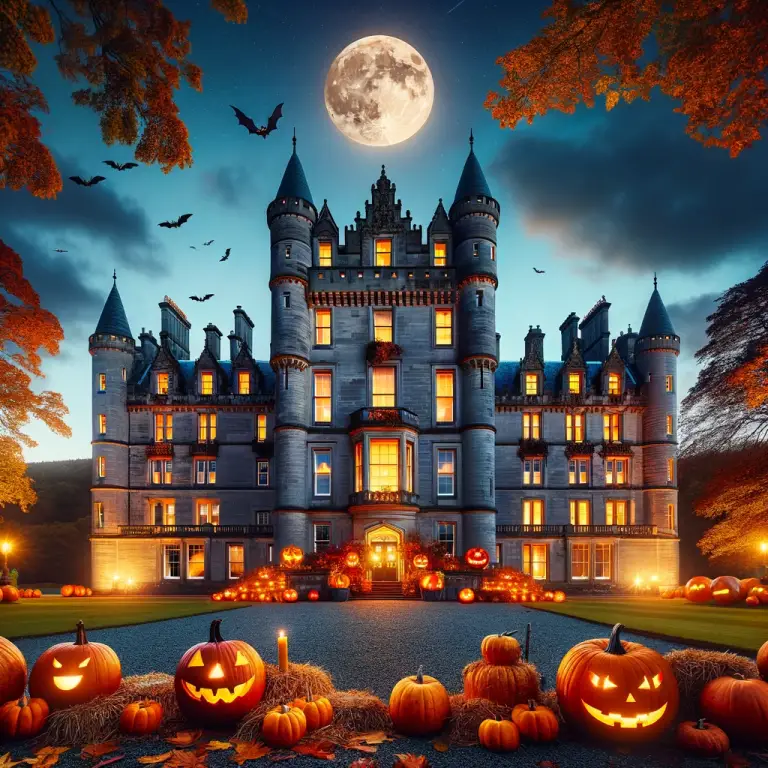As you stroll through the bustling streets of 18th-century London, you discover a fragment of history at every turn – ancient buildings narrating tales as old as time. While navigating through the mazes of London’s landmarks, your senses are caught by the tantalizing aroma of oranges and lemons that waft through the air, guiding you to one of the many vibrant markets scattered throughout the city.
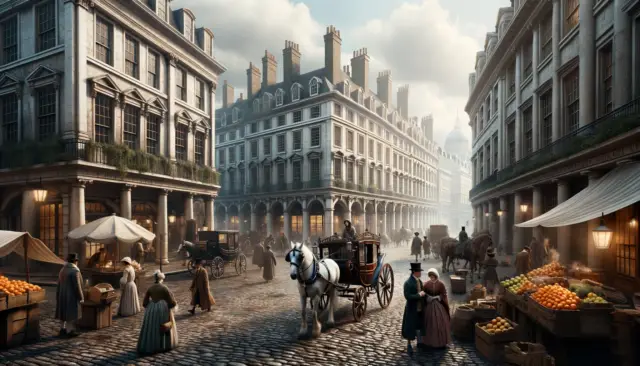
Painting the 18th-Century London Landscape with Words
As we explore the rich history that permeates every cobblestone and brick in the revered landmarks of London, you can almost hear the joyous peals of church bells – a vivid reminder of the renowned rhyme “Oranges and Lemons.” This auditory slice of history entices locals and tourists to delve deeper into the city’s 18th-century milieu, unearthing gems hidden in plain sight.
Oranges and lemons do not have bells!
In 18th-century London, oranges and lemons were more than mere fruits. The ships represented a vibrant trade network that connected distant lands through routes replete with adventures and tales. Citrus wonders were introduced to London’s markets due to a global economic picture, where trade routes became lifelines, nourishing the city’s heartbeat with a fresh pulse of flavour and fragrance.
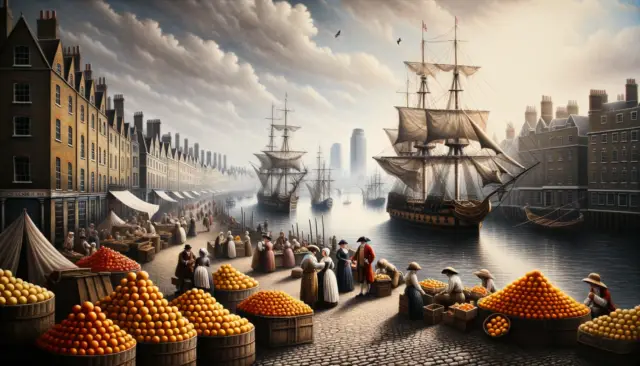
Simple Lyrics, but does it have a simple plot?
The lyrics are indeed simple, but their meaning is not immediately clear. Many theories exist as to the origin and meaning of the song, with one accepted theory being that it was a playful way for children to learn about the various bells of London’s churches.
Another theory suggests that the song was a political satire, with the bells representing various factions or institutions within London society. According to this theory, the song may have been a commentary on the corruption and inequality that existed in London during the 18th century.
Historical Context: The Citrus Trade in 18th-Century London
Oranges and lemons were more than just a popular choice for the locals of 18th-century London — they were a testament to the booming global trade networks and a rapidly evolving economy. During this period, Britain’s trade routes had extended farther than ever before, bringing in a bounty of citrus fruits through routes grounded in lands as distant as sunny Spain and the coastal stretches of Portugal. These fruits were not just symbols of economic prosperity but were coveted for their health benefits, adding a burst of vibrancy and nourishment to the daily lives of the Londoners. Engage with this rich history as we delve deeper into the world where oranges and lemons are not just fruits but golden nuggets of health and prosperity.
The Markets of 18th-Century London
Picture the vivid scenes at the markets during this illustrious era, where stalls were abundant with fresh, ripe oranges and lemons. The vibrant hues of orange and yellow painted a lively canvas as merchants beckoned, adding a burst of colour and zest to London’s daily life. Every transaction was more than just an exchange of goods; it was a rich tapestry of stories woven with threads of gold and citrus, narrating tales of faraway lands, adventures at sea, and the many hands that helped bring these fruits to the heart of London.
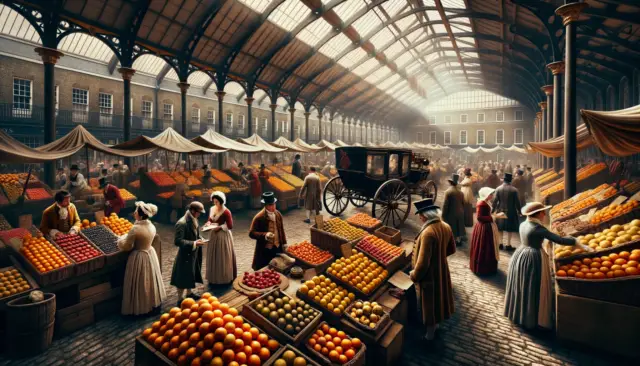
Personal Touch: Unraveling the Tapestry of Folklore
As I delved deeper into the lyrics, I came across fascinating local folklore. There were whispers of it being more than a nursery rhyme; perhaps a reflection of the societal norms of that era or even a secretive code used by Londoners. It brought a sense of wonder, painting the rich history of London with an even broader stroke of magic and mystery, making every note, every word a conduit to the vibrant life and tales of 18th-century London.
What’s Your Take?
As we reach the end of our vivid journey through time, I invite you to share your interpretations and stories associated with this iconic rhyme. Could there be undiscovered layers to this seemingly simple tune? Share your thoughts and let’s weave a rich tapestry of history and personal anecdotes, adding new notes to the age-old melody of “Oranges and Lemons.
Lyrics of Oranges and Lemons Nursery Rhyme
Oranges and Lemons
Say the bells of St. Clement’s
You owe me five farthings
Say the bells of St. Martin’s
When will you pay me?
Say the bells of Old Bailey
When I grow rich
Say the bells of Shoreditch
And when will that be?
Say the bells of Stepney
Oh, I do not know
Say the great bells of Bow
Here comes a candle
To light you to bed
And here comes a chopper
To chop off your head
Oranges and lemons Lyrics: Explained
You can hear the bells of 2 Churches of St. Clement today in London, the formally becoming known as the RAF church of St. Clement Danes and the church at St. Clement’s Eastcheap, but first, you have to make the call which bell is it, or is it neither?
Where is the Church of St Clement Danes, RAF church?
The Church of Clement Danes is a stone’s throw from the Royal Courts of Justice, notably, this is the church that stands in the middle of the road with traffic passing on either side. The date of the site goes back to at least the 9th century when a Danish church once stood. The Church of St Clement Danes is thought to be named after the patron saint of Mariners, St Clement’s.The
The church suffered damage over the years including the great fire of London damage in 1666. In 1682 Sir Christopher Wren completed the church rebuild with James Gibbs, who was responsible for building the tower in 1719.

During World War 2 James Gibbs’s tower had to be rebuilt, due to bomb damage the refurbishment project was finally finished 13 years after the end of the war in 1958. The cost was covered by the fundraising efforts of the RAF. The church was reconsecrated to be the central church of the RAF, on the 19th of October 1958.
St. Clement’s Church: A Beacon of Maritime Tradition
Reflection
As I stood before St. Clement’s Church, I couldn’t help but feel a deep connection with the rich maritime history it embodies. The naval and marine associations resonate strongly here, as the church has long been the symbolic protector of the mariners. With its resplendent Georgian architecture and the resonant bells echoing through the corridors of time, it stands as a living testament to the golden age of sea expeditions. The mariners who once sought blessings here were embarking on journeys to the distant lands, bringing back not just goods but tales, cultures, and, of course, vibrant citrus fruits that found their way into our beloved nursery rhyme. Walking through its hallways, one can almost hear the whispers of adventures and hopes of those long-ago sailors, weaving a rich tapestry of narratives that resonate deeply with the spirit of exploration and discovery.
The Service details at St Clement Dane Church of the RAF
Reverend William Pennington-Bickford started the Service at the Church of St Clement’s in 1919 to celebrate the restoration of bells and carillon. It was his idea to make them chime into the nursery rhyme. The Rector and his wife started a St Clement’s Danes Oranges and Lemon Service. The children at this service received oranges and lemons, they flew some fruits in from RAF Bases in Cyprus in the past. St Clement’s Dane Primary School attends this service every year. It is not the only church associated with the nursery rhyme. The Church of St Clement’s Eastcheap in the East End of London also has an association because of its proximity to the bells of Shoreditch.
When is the service held at the Church of St. Clement Danes?
They hold services every year in March, usually on the 3rd Thursday in March
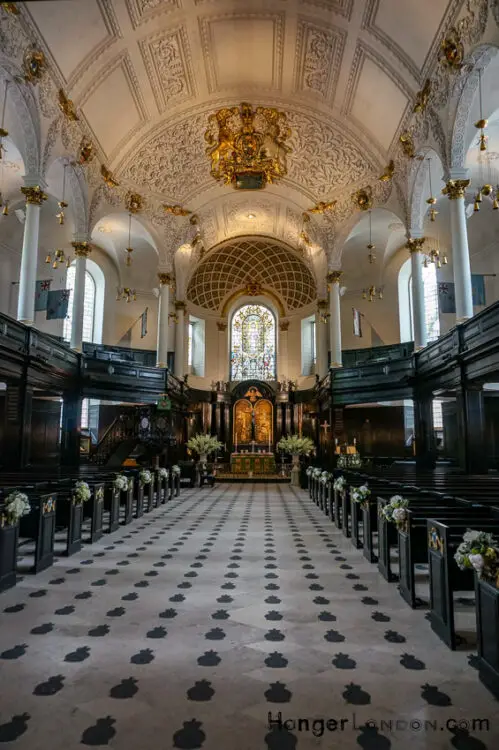
Can we be sure St Clement Danes church is the one in the nursery rhyme?
St Clement Danes does have a plaque inside stating the link, but there are others in the bidding, St Clement’s Eastcheap is the other, making its pitch as the church close to a wharf where Oranges were unloaded. The jury might be still out on that one, It is also possible the lyrical rhyme of St. Clement was based on none of the above specific churches and just a very fitting name to a song, it is not that uncommon for lyricists to work with words first, but what would be the point of that in this particular Rhyme. Nonetheless, there are only two churches that are named after the patron saint of Clements, and both claim to be the one in the Oranges and Lemons Nursery Rhyme. St Clement Danes goes on further to play the tune of Oranges and Lemons three times per day, so that is always a good reason to lean to one or the other.
You owe me five farthings, Say the bells of St. Martin’s.
There is not much of the St Martin’s Orgar church today, an unfortunate history of damage during the Great Fire of London, rebuilt and subsequently pulled down with part of the tower being rebuilt in 1851. The remains of the churchyard just south of the tower can still be seen today. The parish was merged with Clement Eastcheap. Cheap being the old English word for market, east market and yes you guessed it, there was a west market too.
If you were to indulge in some old London folklore,
St. Martin’s Church: The Compassionate Guardian
Reflection
As the gentle bells of St. Martin’s Church tolled in the distance, I found myself reflecting on the powerful history of compassion and charity that the church stands for. Once regarded as the church of the “poor box,” it historically assisted those in need, offering solace and aid to the homeless and the destitute. Each brick seems to tell stories of kindness, painting a vivid picture of a community bound by empathy and the unwavering spirit of humanity. The personal stories and historical gestures of charity intertwined here remind us of the warmth and kindness that encapsulated the community spirit of the 18th century, echoing the deeper connections that people forged amidst hardships, kindled by the spirit of unity and shared human experience.
When will you pay me? Say the bells at Old Bailey.
Well, the Bell of Old Bailey was a challenge, The Old Bailey courthouse does not have a bell, but across the road, St. Sepulchre-without-Newgate, the largest church in the city of London does. This church was once next door to Newgate Prison.
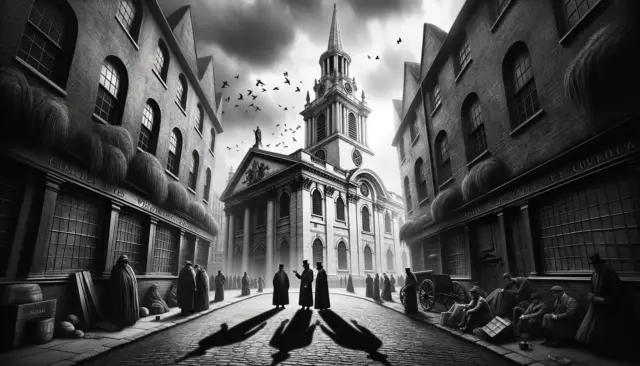
The bell of St. Sepulchre-without-Newgate rang the death knell for executions. Old Bailey today is of course more associated with the Central Criminal Court, commonly referred to simply as the Old Bailey, named after the street it is located on, Bailey Street. ‘When will you pay me’ refers to the debtors housed in Newgate prison, with debtors tried at the Old Bailey courthouse next door.
St. Sepulchre’s Church: The Resounding Call to Justice
Reflection
At St. Sepulchre’s Church, history takes a stern yet hopeful turn. Known historically as the “bells of Old Bailey”, the church’s bells once tolled somberly to mark the execution of criminals. But amidst this grim history, there lies a beacon of hope and change. It’s fascinating to note that the church played a role in fostering a sense of justice and order in a rapidly growing London. Each corner of the church feels like a silent witness to centuries of evolving societal norms, telling stories of redemption and the ceaseless march toward a just society. Standing here, one can feel the echoes of time reverberating with lessons of morality and justice, urging us to remember and learn from our shared history.
When I grow rich, Say the bells at Shoreditch.
Shoreditch is an area in the East End of London and was once a centre for the silk-weaving industry. The area is known for its historic buildings, street art, and vibrant nightlife. However, in the 17th century, it was a working-class neighbourhood with a thriving market.
The rhyme “Oranges and Lemons” was sung by children in the area while playing a game that involved passing under an arch made by the arms of two players. The game would end when the player caught in the arch was chosen to be a “sacrifice” and had to pay a forfeit.
The church bell of Shoreditch is the church of St Leonard on Kingsland Road. St. Leonard’s church is one of the oldest churches in London and has a long and fascinating history. It was originally built in the 12th century and was known for its beautiful stained glass windows and impressive tower. However, during the English Civil War, the church was badly damaged and fell into disrepair. It was eventually restored in the 18th century and remains a prominent landmark in Shoreditch to this day.
The line “When I grow rich, Say the bells at Shoreditch” is often interpreted as a reflection of the aspirations of the working-class children who sang the rhyme. The idea of growing rich was likely a distant dream for many of them, and the bells of St. Leonard’s church may have represented a symbol of hope for a better future.
The rhyme “When I grow rich, Say the bells at Shoreditch” is part of a longer poem, which goes like this:
“When I grow rich, Say the bells at Shoreditch
When will that be? Say the bells of Stepney
I do not know, Says the great bell of Bow
Here comes a candle to light you to bed
And here comes a chopper to chop off your head.”
The poem is a conversation between the speaker and the bells of different churches in London. The speaker asks each set of bells when they will become rich, and the bells respond with a witty answer. The final line of the poem is a warning that suggests that the speaker should go to bed and be careful, as danger may be lurking around the corner.
Shoreditch Church: The Vibrant Artistic Soul
Reflection
Shoreditch Church stands as a vivid testimony to the rich artistic soul of London. Historically a hub for artists and theatregoers, the area surrounding the church still vibrates with creative energy. The church itself, with its beautiful interiors and magnificent façade, speaks volumes about the artistic heritage it has nurtured over centuries. It has witnessed the blossoming of art and culture, offering a haven for creative minds to meet, collaborate, and envision masterpieces. A walk through this historic site evokes a deep respect for the artists of yesteryears and a personal yearning to keep the rich artistic history alive, nurturing creativity for generations to come.
When will that be? Say the bells of Stepney
The church of the High Seas also known as The Church of St Dunstans is located on Stepney High Street. There have been 3 churches built on this site, the current one has been there for almost 500 years, with the first one being built in 952AD. ‘When will that be’ could be when the ships return. Many sailors are buried in the churchyard here.
The bells of St. Dunstan’s Church in Stepney, East London have been a part of the community since the early 16th century. The church itself was built in the 10th century, but the current building dates back to the 15th century. The bells were cast in 1725 by Thomas Lester and are said to be one of the finest sets of eight bells in the world.
Over the years, the bells have played a significant role in the lives of the people of Stepney. They have rung out to celebrate weddings, mark the passing of loved ones, and announce important events such as the end of World War I and the coronation of Queen Elizabeth II.
But perhaps the most famous association with the bells of Stepney is their inclusion in the nursery rhyme Oranges and Lemons. The rhyme, which dates back to the 18th century, tells the story of various churches in London and the bells that ring out from them. The final verse goes:
“Here comes a candle to light you to bed,
And here comes a chopper to chop off your head!
Chip chop chip chop – the last man’s dead!
When will you pay me? Say the bells of Old Bailey
When I grow rich, Say the bells of Shoreditch
When will that be? Say the bells of Stepney”
The rhyme has been a popular children’s song for generations, and the bells of Stepney have become synonymous with the phrase “When will that be?”.
In more recent times, the bells of St. Dunstan’s have continued to play a vital role in the community. They were rung to commemorate the victims of the 7/7 bombings in London, and they rang out to celebrate the 2012 Olympic Games.
Today, the bells of Stepney still chime regularly, and the church is a popular destination for visitors from around the world. While the origins of the phrase “When will that be?” may be lost in the mists of time, the bells of Stepney continue to be a reminder of London’s rich history and enduring traditions.
St. Dunstan’s Church: A Tapestry of Time
Reflection
At the footsteps of St. Dunstan’s, I felt like a humble spectator before a grand stage where centuries have unfolded. This awe-inspiring structure, resiliently standing since its foundation in the early 10th century, has weathered events that have marked pivotal turns in the annals of history. From witnessing the Great Fire of London to enduring the traumas of the World Wars, it has stood, perhaps as a symbol of perseverance and endurance.
The iconic clock, which was added in the 17th century, is not just a mechanism to mark hours but a testimony to the continuous march of time. It seemed to tick in harmony with the heartbeat of London itself, bearing witness to both moments of historic significance and everyday lives unfolding in the streets of London. One cannot help but admire its ornate design, which speaks to the craftsmanship of bygone eras, a careful amalgamation of artistry and engineering.
Reflecting on the journey of St. Dunstan through time, I found a poignant reminder of the ceaseless cycle of creation, destruction, and renewal. It fosters a deep appreciation for the resilience of the human spirit, etched in the very stones and stained glass that bear silent witness to the journey of a city and its people, bound together in an intricate dance with time.
I do not know, Says the great bell at Bow.
The great bell at Bow has been an iconic symbol of London for centuries. Located in the tower of St. Mary-le-Bow church, it has been a part of the city’s skyline since the 12th century. But, did you know that the bell has a fascinating history behind it?
Legend has it that the great bell at Bow was cast by a group of monks who wanted to create a bell that would rival the famous “Old Tom” bell of St. Paul’s Cathedral. According to the story, the monks decided to add some special ingredients to the molten metal, including their own urine, in order to create a more resonant sound. Whether or not this tale is true, the bell became famous for its distinctive tone.
Over the centuries, the great bell at Bow has been witness to some of London’s most historic events. During the Middle Ages, it was used to signal curfews and to announce the opening and closing of city gates. In 1066, it is said to have been rung to signal the approach of William the Conqueror’s army.
But, perhaps the most famous use of the bell was during the Peasants’ Revolt of 1381. The rebels, led by Wat Tyler, marched on London and demanded an end to serfdom and other oppressive practices. When they reached St. Mary-le-Bow church, Tyler reportedly demanded to speak with the king, Richard II. The great bell at Bow was rung to signal the king’s arrival, but when he did not appear, the rebels became angry and started a riot. The revolt was eventually put down, but the bell’s role in the events became part of London folklore.
In the centuries that followed, the Great Bell at Bow continued to be an important part of London life. It was rung to mark important occasions, such as royal coronations and weddings, and to signal disasters, such as the Great Fire of London in 1666.
Today, the great bell at Bow still chimes every hour, reminding Londoners of the city’s rich history. And, if you listen closely, you can still hear its distinctive tone, echoing across the rooftops of the city. As for the meaning behind the bell’s famous inscription, “I do not know,” that remains a mystery. Some say it refers to the bell’s uncertain origins, while others believe it is a reflection of the church’s humility. Whatever the reason, the great bell at Bow remains a fascinating piece of London’s past, and a reminder of the city’s enduring traditions.
The church of St Mary-le-Bow, off Cheapside, is another City of London church with a long past, with original church structures on this site from before the Norman invasion of 1066, The name Bow Bells first appeared written in 1469. The Church you see today is one of Christopher Wren’s masterpieces of the 1670s. The Great Fire of London having taken took out the original church structure. What do you not know? Says the great bell at Bow, what does this one mean
The Great Bell of Bow: The Voice of Celebration and Unity
Reflection
As I approached the sound of the Great Bell of Bow, it felt like the heartbeat of London was resonating in its chimes, reaching out to embrace every visitor with a warm, enveloping sound. Historically, the tolling of this magnificent bell marked not just hours and days but significant events in the life of the city, forging a deep connection between the rhythm of human life and the timeless passage of days and seasons.
Being at the Bow Church stirred a sense of unity and togetherness. This church and its legendary bell have long stood as symbols of community and celebration. It was here that people gathered to witness the proclamation of royal marriages, coronations, and victories that marked the rich tapestry of London’s history. Its rings have united people in moments of joy and reflection, creating a rich auditory tapestry woven with countless stories of communal joy and shared history.
Personally, standing here evoked a profound sense of belonging to a much larger tapestry of human stories. It’s a place where one can sense the pulsating vibrancy of life, a unifying force echoing with joy, sorrow, and the melodious rhythm of shared human experience. It invites us to pause, listen and perhaps find our own story in the rich symphony of histories that resonate in the chimes of the Great Bell of Bow.
Amazon Nursery Rhyme Book top picks
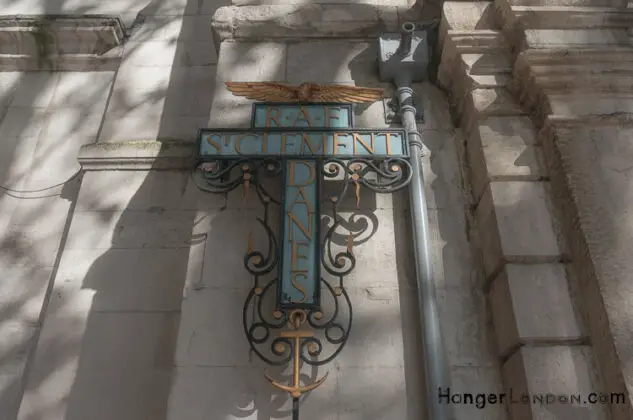
What do Oranges and lemons say the bells of St. Clements mean
Theories abound about what the words to the Nursery Rhyme ‘Oranges and Lemons’ mean, Putting aside the original versions of the lyrics, there is the consensus of its association with Executions, but that is not a given.
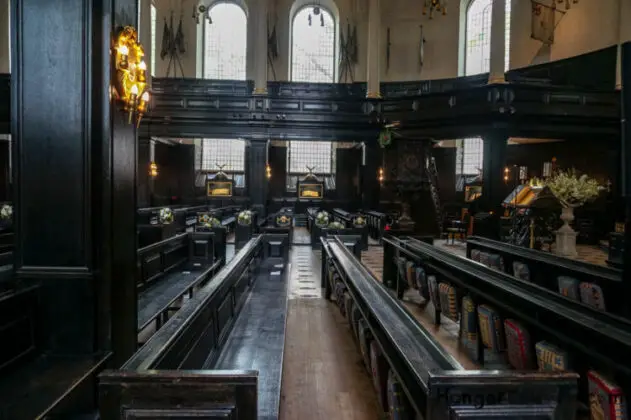
In print, there is a written record of the song in the book called The Dancing Master of 1665, which depicts the song played against a square 4 eight dance. The book is a manual with music and dance instructions for English country dances, published by John Playford. We can find the original version of this book in the British Library,
Other Nursery Rhymes that may have other meaning
Leave a comment below if you know of the darker meaning of Oranges and lemons or any of the other most well-known Nursery Rhymes.
- Mary, Mary Quite Contrary
- Jack and Jill
- Rub a dub dub
- Three blind Mice
- Here we go round the Mulberry Bush
- Ring a Ring o’ Roses
Comment Below with your thoughts and interpretations of this nursery rhyme
Would love to read your thoughts and versions of this classic Nursery Rhyme. It does paint an incredible tapestry of London history and London Life.
The London Lifestyle Journal of Arts & Culture and London History

